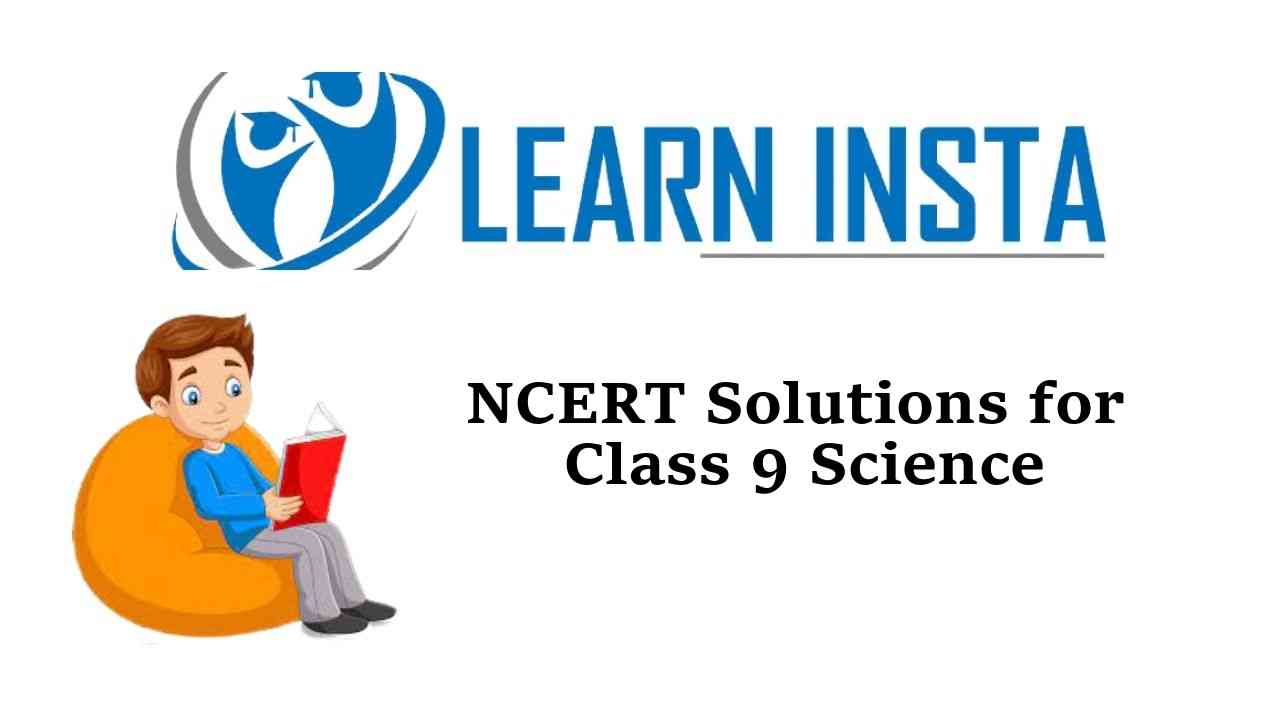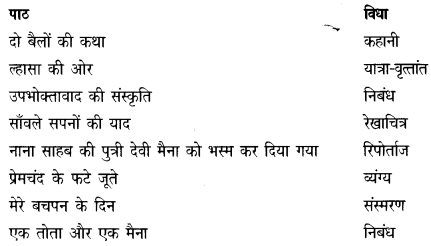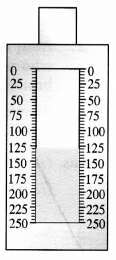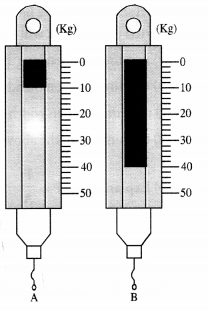NCERT Solutions for Class 9 English Literature Chapter 1 How I Taught My Grandmother to Read are part of NCERT Solutions for Class 9 English. Here we have given NCERT Solutions for Class 9 English Literature Chapter 1 How I Taught My Grandmother to Read.
| Board |
CBSE |
| Textbook |
NCERT |
| Class |
Class 9 |
| Subject |
English Literature |
| Chapter |
Chapter 1 |
| Chapter Name |
How I Taught My Grandmother to Read |
| Number of Questions Solved |
10 |
| Category |
NCERT Solutions |
NCERT Solutions for Class 9 English Literature Chapter 1 How I Taught My Grandmother to Read
TEXTUAL EXERCISES
(Page 3)
NCERT Solutions for Class 9 English will help you to score more marks in your CBSE board Examination.
Question 1.
Write about the following memories or experiences. Share your views with the class.
- A memorable holiday spent with your grandmother
- A story told by your grandmother
- The things you admire the most about your grandmother
- The difference between your mother and your grandmother
Answer
1. Yes, I remember a memorable holiday, I spent with my grandmother last month. Our school was closed for autumn break. I directly went to my grandmother who lives in a village. When she saw me she burst out like a beautiful flower. She hugged me. Then she offered me certain delicacies like home-made halwa, puree and kheer. She took me to the temple in the evening.
She asked me to pray to the goddess for prosperity of all. During evening she narrated the stories of our scriptures, The Ramayana, The Mahabharata, and The Panchtantra. She advised me that man’s good deeds always remain with him and these make him great. Doing good deeds and helping the needy ensures contentment. She told me that God loves those who love their fellow-beings. I had never heard such things earlier. These had an indelible impression on me. I promised her to follow her advice in my life and actions.
2. Like all grandmothers my mother also told me a story. It was of two cats and a monkey. The two cats got a chapati from somewhere. They started fighting over the chapati. Both of them wanted more of it. But they couldn’t understand how this could be divided equally between the two. They decided to take external help to settle the issue. By chance a monkey came their way. They told the monkey about their problem. The monkey asked them to wait for a few minutes. He reappeared with a balance and asked the cats to give the chapati to him. He knowingly made two pieces of it- one bigger and the other smaller.
He then put these two pieces on both the sides of the balance. When he balanced them to weigh one side went upwards and the other remained low. He tore a major part of the piece of chapati from the piece which hung low and ate it up. This side got less weighty and when he balanced, it went up. He then took a major part of the other piece of the chapati. He did this two, three times. By that time the whole chapati stood eaten by him. This amazed the cats as there was nothing left of the chapati for them. They learnt a bitter lesson that they wouldn’t fight. Also they won’t believe in a clever and crafty external force.
3. There are many things I admire the most about my grandmother. These are : her simple and straightforward nature; her simple living; her regular working schedule ; her religious mind and regularity of daily life. It is like rising in the morning, taking a bath, praying and some light physical exercises etc. My grandmother is still agile and active. She does the domestic chores by herself. She takes very simple food and eats those things that are not harmful for health. She never takes fried food.
She never takes cold drinks and never eats street food. Then she helps the needy. She gives charities and attends sermons by the holy men. She has a great faith in holy scriptures. She recites holy prayers by herself while worshipping in her own temple. Thus my grandmother leads a pious, regular and disciplined life. Due to the qualities of head and heart, she is admired and respected by all.
4. Yes, there is much difference between my mother and my grandmother. It is not of temperament or disposition. But it is mainly of physical compulsions of life. My mother has most of the qualities of my grandmother. But she can’t exercise them due to her being in service. She is always short of time and is always in a hurry. However, she has a frugal mind and is very conscious of spending money.
She doesn’t give much in charities as she thinks that giving alms makes the beggars parasites. She can’t pray as she has to leave for her school in the early morning. Then she can’t narrate us stories like our grandmother does. She doesn’t believe in giving a long » rope to the children as she believes that this can spoil them. But my grandmother believes firmly in love and affection. She feels and says that these, together with moral values, can bring wonderful results.
Question 2.
Have you ever been on a trip to any place in India, where you didn’t know the language spoken locally ? How did you feel ? How did you manage to communicate ?
Answer
Yes, I went to Tamil Nadu last year. There I had to face a lot of problems due to the Tamil language. I didn’t know Tamil and they didn’t know Hindi or English. Where I got some educated men to talk to, the problem didn’t arise as I could speak English. But in the rural side near Chidambaram, I really faced a tough time. I felt completely isolated and aloof.
The rural people tried to understand me and I them but I remained non- communicative. However, I spoke some broken words and gesticulated about the things. For instance, I needed vegetarian food and closing my fingers took them towards my mouth. Then I gave out a cock-like sound indicating, I was vegetarian and didn’t take meat etc. They laughed but understood. Then they willingly helped me by showing me the way to a vegetarian hotel. It was altogether a funny incident.
Question 4.
Now that you have enjoyed reading the story, answer the following questions by choosing the correct option
(a) The grandmother could relate to the central character of the story ‘Kashi Yatre’ as …..
- both were old and uneducated.
- both had granddaughters who read to them.
- both had a strong desire to visit Kashi.
- both were determined to learn to read.
(b) Why did the women at the temple discuss the latest episode of ‘Kashi Yatre’ ?
- to pass their time.
- the writer, Triveni, was very popular.
- they could relate with the protagonist of the serial.
- women have a habit of discussing serials.
(c) The granddaughter found her grandmother in tears on her return as
- the grandmother had been unable to read the story Kashi Yatre’ on her own.
- the grandmother had felt lonely.
- the grandmother wanted to accompany her granddaughter.
- she was sad she could not visit Kashi.
(d) Why did the grandmother touch her granddaughter’s feet ?
- As a mark of respect to her teacher.
- It was a custom in their family.
- Girls should be respected.
- She had read the story of Kashi Yatre’ to her.
Answer
(a) (i)
(b) (ii)
(c) (i)
(d) (i)
Question 5.
Answer the following questions briefly
- What made Triveni a popular writer ?
- Why did the grandmother depend on her granddaughter to know the story ?
- Pick out two sentences which state that the grandmother was desperate to know what happened in the story.
- Could the grandmother succeed in accomplishing her desire to read ? How ?
- Which of the following traits would be relevant to the character of the narrator’s grandmother ?
- determined
- selfish
- emotional
- mean
Give reasons for your choice.
Answer
1. The story of the heroine in Kashi Yatre, her desire to visit Kashi and the Indianness in her writings made Triveni a popular writer. The simple themes, social, moral and cultural values appeal to the hearts of all the readers. Then these are connected with life of the common people. These add to this popularity. Finally, the universality and psychological aspects of the themes made her very popular.
2. The grandmother depended on her granddaughter to know the story because she was illiterate and the granddaughter was literate. The grandmother couldn’t read anything of the serial on her own. In fact her granddaughter used to read the story for her.
3. The two sentences are :
- Many times, I rubbed my hands over the pages wishing they could understand what was written.
- If only I was educated enough.
4. Yes, the grandmother could succeed. She made her granddaughter teach her by her humble pleadings and the necessity of the situation. Her determination and humility made her learn the alphabet. She was able to accomplish her desire to read the novel due to her determination and will power.
5. 1, 3 .
- The grandmother was simply desperate to read the serial on her own. This egged her on to start learning the Kannada alphabet. Finally she was able to read due to her determination and willpower.
- She was highly emotional also. This showed her simplicity of heart and desperate willingness to learn. Tears in her eyes and her smiling even though her granddaughter making fun of her bore good results. Her granddaughter became her teacher. Due to that she learnt the Kannada alphabet quickly.
Question 6.
Here are some direct quotations from the story. Identify the speaker and write what each quotation suggests about the speaker. You can use the adjectives given in the box and may also add your own.
amiable, tender, gentle, sympathetic, understanding, determined, diligent, kind, concerned, systematic, wise, helpful, enthusiastic, selfish, cruel, humble, religious, prudent


Answer
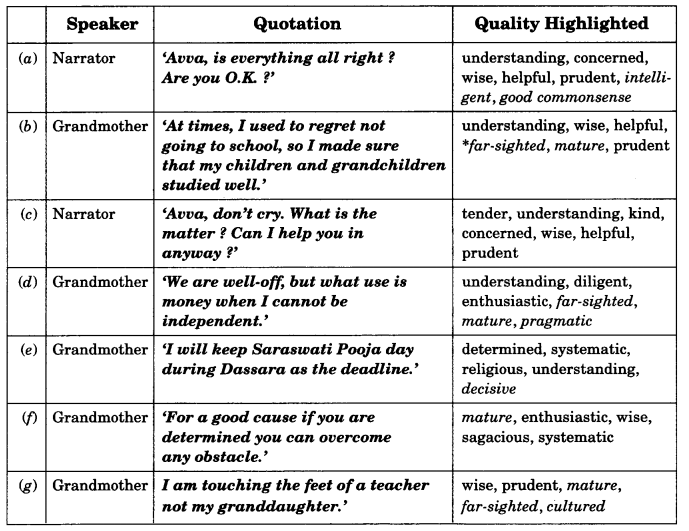
*The italicised adjectives given above are from our own side, as desired.
LISTENING TASK
Question 7.
Now you are going to listen to the story of a young girl about a special day.
(a) Based on your listening of the story complete the boxes given below.
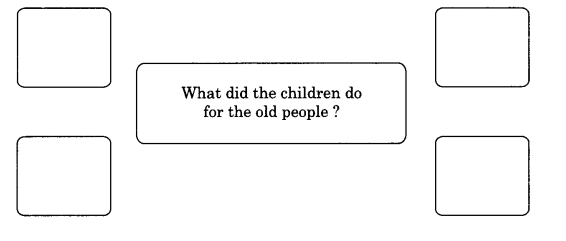
Answer
The children did the following for the old people :
- They blew balloons and hung them around the hall of the Old Age Home they visited.
- They cut out Chart Papers.
- They wrote quotes on them.
- They drew pictures on them.
- They then stuck them on the wall.
- They bought a big cake for them.
- They cut the nice big Cake they took with them and distributed its pieces among the inmates of the Old Age Home.
- They sang songs for them and conversed with them.
(b) List any three feelings of the old people in this story.
- ______
- _____
- _____
Answer
The following are the three feelings of the old people in this story :
- feelings of loneliness
- of insecurity
- of missing their children and grandchildren
(c) Complete the following :
- We can make our grandparents happy by______
- We can avoid constructing more and more Old Age Homes by______
Answer
- … sitting with them, sharing their experiences and helping them physically/giving them company.
- visiting them frequently and/or by keeping them with us as important members of the family.
Question 8.
After having read the story, you realise the anguish of the illiterate adults. You want to make your friends aware of it and contribute something in bringing about a change in the lives of the illiterate adults. Deliver a speech in the morning assembly at your school about the Importance of Adult Education and ways to implement it.
Read the following to make your speech effective :
The introduction of a speech is like the nose of an airplane. The nose sets the course and leads the plane off in a specific direction. A good introduction sets the direction of your speech by
- getting the attention of your audience
- introducing your topic
- stating your central idea or purpose
- briefly identifying the main points
- making your audience eager to hear what you have to say
Answer
Worthy Principal, teachers and fellow-students
Today I, Pradeep, of class IX, stands before you to deliver a speech on the Importance of Adult Education and ways to implement it.- Well, at the outset, I would say that illiterates are liable to be cheated everywhere. They have to be dependent on others for knowing things around them. They are branded as ‘illiterates’ and treated in a hateful way.
They can’t maintain their accounts and can easily be deceived, cheated and befooled. They are discriminated against. They can’t join the mainstream of social life. Their knowledge about what is happening around them is minimal. So they feel handicapped to take part in matters requiring far-sightedness, wisdom and maturity. The importance of Adult Education is seen in the fact that the illiterates get a sense of fulfilment in being literate. They can take advantages of various schemes of the govt, meant for their social, economic and moral uplift.
You’ll agree with me that we as students can render a yeoman’s service in educating these adult illiterates. We can hold Literacy Camps in villages and tell them the advantages of being literate. Literate women can bring a drastic change in their lives. Being literate they can read material on childcare, health and hygiene, and other areas of human knowledge and activity.
They can progress in all fields of human life and raise themselves up in all spheres. They can learn a lot about latest techniques of farming, need for personal hygiene and importance of cleanliness, hygiene, family planning etc. Being literate they can decide what is good or bad for them. We should, therefore, convince the adult illiterates to join the literacy classes whenever they are held.
Thank you very much.
WRITING TASK
Question 9.
You are the grandmother. How did you feel when your granddaughter gave you the novel ‘Kashi Yatre’ ? Write your feelings in your diary.
To make your diary entry interesting, read the following information about what is a diary entry.
A diary entry is a purely personal piece of writing. The writer expresses his/her thoughts and feelings. Reactions to incidents are generally poured out in a diary. Hence expressions that are emotionally charged are used.
For example – When you are happy about something, you could start like this—
8th July 20xx, Wednesday 8 pm
Today I am very happy as …………..
Answer
8th July 20xx, Wednesday 8 pm
Today I am very happy to have been gifted with Triveni’s novel Kashi Yatre. I just fell in love with the grand old lady who is the central figure in this novel and identified myself with her. Actually the serialisation of this novel in the Kannada weekly Karmaveera raised in me the desire of knowing more and more about her. I, too, was once drawn towards a feeling of visiting Kashi and worshipping Lord Vishweshwara as the ultimatepunya. I fully supported this old lady in having given all her saving to the orphan girl. She rightly thought it was more an action of punya than visiting Kashi. I, too, could have done the same thing. This help was more punya. This orphan girl couldn’t marry her lover, whom she loved passionately due to poverty. Thus the old lady as the heroine of the novel proved more appreciative because of her qualities of head and heart.
I shall cherish this novel more because it enabled me to be literate. Actually with this novel more sweet memories are intertwined. These are like how I developed fascination for the heroine and how my own granddaughter became my teacher. The craving to know more about the old lady simply motivated me to be literate. Now I can read any novel. I shall keep this Kashi Yatre as my holy book. May my granddaughter live long ! Grandmother
Question 10.
Here is a story about Swami and his grandmother. After reading the excerpt, change it into a conversation between Swami and his Grandmother.
Answer
Swami : Oh, Granny ! You don’t know what a great fellow Rajam is. He has a large heart and is very wise and far-sighted. For instance, he had some sort of enmity with Mani. But he soon became his friend, even though he has a police dress.
Granny : Is it ? Why should he want a police dress ?
Swami : His father is the Police Superintendent and commands over all policemen here.
Granny : Then his office must be tremendous. Swami, your grandfather was a powerful sub-magistrate. Before him his office even the police force and the fiercest dacoits would tremble.
Swami : This is o.k. Granny. Enough of your stories. Now listen. I want to tell you something about Rajam. Do you know how many marks Rajam gets in arithmetic ?
Granny : Does he get all the marks, child ?
Swami : No silly. He gets ninety marks out of one hundred.
Granny : You too must try and get marks like him. You know, Swami, your grandfather used to frighten the examiners with his answers sometimes. He took one tenth of the time that others took to answer the question. And then answers would be so correct that the teachers would give two hundred marks sometimes.
Swami : Oh, enough, Granny ! You relate unnecessary stories. Please listen about Rajam.
Granny : Alright.
Swami : Now listen. Rajam’s father was camping in a forest with his son. Two tigers came upon them suddenly, one knocking his father from behind. The other began chasing Rajam but he took shelter behind a bush and shot that dead with his gun …. Granny, are you asleep ?
We hope the NCERT Solutions for Class 9 English Literature Chapter 1 How I Taught My Grandmother to Read help you. If you have any query regarding NCERT Solutions for Class 9 English Literature Chapter 1 How I Taught My Grandmother to Read, drop a comment below and we will get back to you at the earliest.
